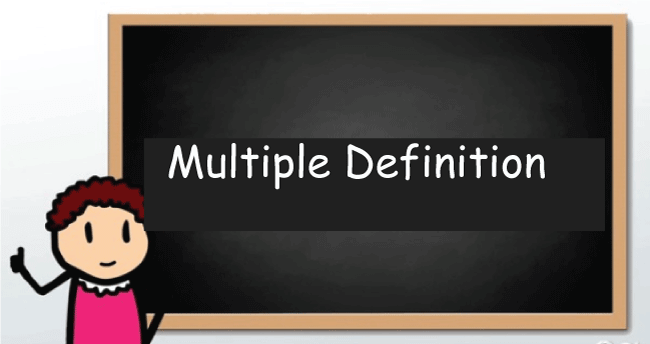Multiple DefinitionIn mathematics, "multiple" is a conceptual term used to describe the result of the product of a number with another whole number. A multiple is any number shown as the product of two whole numbers. For example, when we multiply three by two, the result is six only. Here, 6 is the multiple of 2 and 3, as 6 is the result of the multiplication of 2 by 3 or 3 by 2. 
For example, when the multiples of 3 are 3, 6, 9, 12, 15, similarly, the multiples of 5 are 5, 10, 15, 20, 25, etc. So, in simple terms, the multiples of a number are in its multiplication table. A common question comes to our mind what the difference between a common multiple and a multiple is? A number that is a multiple of two or more given numbers in common is known as a "common multiple." The common multiples of 2 and 3 are 6, 12, 18, 24, 30, and so on, common in a multiplication table. In addition to the above-stated words, the smallest common multiple of two or more numbers is known as the "least common multiple" or the LCM of two or more numbers. Finding the LCM is useful when we simplify, add, and subtract fractions with different denominators. The long division or multiple common methods can find the LCM of two or more numbers. For convenience, we will be dealing with multiple common methods only. Let us find out the LCM of two numbers 4 and 6:
To further understand LCM, let us look at an example. The LCM of 4 and 6 is 12, and the multiples of 4 are 4, 8, 12, 16, and many more. The multiples of 6 are similarly 6, 12, 18, 24, 30, 36, 42, 48, 54, 60, and 66. In this example, the least common multiple, or LCM, is 12 since the common multiples of 4 and 6 are 12, 24, 36, etc. Let us dive deep into the definition of multiple A multiple is completely and evenly divided by another number without leaving a remainder. For instance, 6 is a multiple of 3 since we obtain two as the quotient when we divide six by 3 with no remainder. Considering multiplication tables is another technique to gain greater knowledge about multiples. A number's multiples are all the numbers that result from multiplying it by other whole numbers. For example, the multiples of 3 are: 3 x 1 = 3 3 x 2 = 6 3 x 3 = 9 3 x 4 = 12 3 x 5 = 15 3 x 6 = 18 Here, the multiples of 3 are 3, 6, 9, 12, 15, 18, etc. Some Important Terms Related to Multiples:
"Multiple match" game to learn about multipleLet us play a game called "Multiples Match," which can help us learn about multiples in a fun and more interactive way! Here is the method to play: First, draw a grid of 5 columns and 5 rows on medium-sized paper. Write the numbers 1 through 25, which should be randomly in the grid. Then, pick a number between 2 and 10 as the "target number." This is the number that we want to find multiples for. Start the game by selecting a number from the grid. If the number is a multiple of the target number, you need to keep it and color it with your choice of color. If it is not multiple, leave it as it is. Now, keep selecting the numbers from the grid until and unless you have found all the required numbers, which are multiples of the target number. Once you have all the multiples, shout, "Multiples Matched …multiples matched!" Now it is my turn to choose a new target number, and we will start again. You can remember your score by counting the multiples you find for each target number. The player with the most number of multiples at the end of the game wins! This game is a fun and engaging way to practice finding multiples and can help you learn the concept faster. So, have fun! And enjoy.
Next TopicMusic Definition
|
 For Videos Join Our Youtube Channel: Join Now
For Videos Join Our Youtube Channel: Join Now
Feedback
- Send your Feedback to [email protected]
Help Others, Please Share










